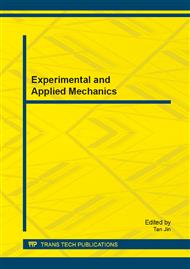p.165
p.170
p.178
p.184
p.190
p.196
p.201
p.209
p.215
Three-Dimensional Finite Element Analysis of Implants with Different Crown-to-Root Ratio and Different High Thread
Abstract:
To compare the strain and stress distribution on jaw bone around the implant with different crown-root and different teeth high in teeth repairing, three-dimensional geometric model of the implant was created and analyzed through UG and finite element analysis software. Model came to workbench software after it was drawn and assembly by 3D mapping software of UG. Given material properties of the model, meshing, boundary conditions and forces applied for analysis. It was Obtained that the size and distribution of stress and strain about jaw bone and implant under different conditions. The influence of jaw bone and implant in different conditions was discussed. The main results of the study are as follows: different implant and crown-root, maximum stress with the crown-root increases, but the maximum stress is placid. Factor in the high thread where the maximum stress with high thread show an inverted "U" shape, the maximum strain with high thread becomes flat.
Info:
Periodical:
Pages:
190-195
Citation:
Online since:
February 2014
Authors:
Price:
Сopyright:
© 2014 Trans Tech Publications Ltd. All Rights Reserved
Share:
Citation:


